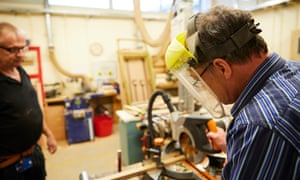Many healthcare organisations want to dump the term “patients”, according to participants at a major event in London yesterday called the Future of People Powered Health. “Patient” is widely disliked – with its connotations of having to wait patiently, quietly and uncomplainingly to be the passive recipient of a doctor’s largesse. “Customer” isn’t much better; “client” or “service user” have some takers, and “partner” may be the best of a bad lot. But do we need a term at all?
Halima Khan, executive director of Nesta Health Lab who organised the event in partnership with Guy’s and St Thomas’ Charity , says the debate about whether to ditch the term “patients” has been bubbling up for some time. Many feel that the word, derived from the Latin “patiens” (one who suffers) is now obsolete. There’s support from patient and professional groups to consider changing the language in the hope that some entrenched attitudes will change too. “The Royal College of General Practitioners, for instance is teaching trainee GPs to talk to and about patients in a different way.”
But mental health campaigner Gillian Lamb (not her real name), who has been treated for serious mental health problems, sectioned and admitted to psychiatric units, says she couldn’t care less what she’s called so long as she’s treated with dignity and respect. “I’ve never minded being called a patient because I don’t feel inadequate, secretive or ashamed of having a mental illness. But I know others who are very sensitive about the medicalisation of their condition, and they do object to the term.”
Opponents of ditching the word “patient” say the original meaning of the word doesn’t matter, there’s no suitable alternative, it doesn’t carry connotations of passivity any more, attitudinal change can occur without ditching the name, and changing the name may not lead to meaningful change.
One suggestion is to borrow the language of intentional and therapeutic communities, set up like house-shares in which people are called members and are all expected to muck in and have equal status even if they have different roles. Lamb says that on her ward, “patient meetings” were called “community meetings” – or a “coalition of the unwilling” as an off-message staff member called it.
But the language that organisations use can reflect their philosophy and intended style of delivery. So an upmarket care home wanting to sell itself as being like a hotel may call residents “guests”. The term “service users” has become popular in the NHS though it’s (unintentionally) ironic given that accessing services is often a key problem for people suffering from chronic conditions – “service hopefuls” might be more accurate. “Stakeholders” crops up a lot; I have no idea what it means; don’t we all have a stake in our health and social care?
As a GP and occasional “patient”, I don’t see the need for any term at all. We have 4500 people registered at our surgery. Every person who comes into see me is, just that, a person. When I was in hospital recently for an operation, I didn’t morph into a patient when I entered the ward. I was the same person that I am in the street, but requiring a particular service. After a particularly dehumanising experience with a night nurse, I felt like screaming “I am not a patient, I am a free person”, in a parody of the The Prisoner. Needless to say, I didn’t do that but instead behaved nice and patiently. I say, let’s ditch the term patient altogether and replace it with … person.
Healthcare bodies want to scrap the term ‘patients’. As a GP, I have a better idea | Ann Robinson








